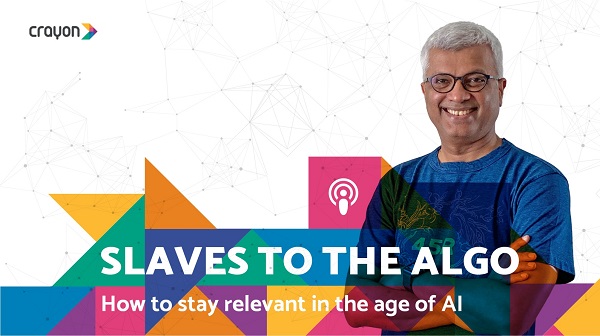I had an opportunity to interview Dr. Robin Lougee, Research Scientist, IBM and ask some questions around IBM’s ongoing research collaboration with McCormick & Company in the use of artificial intelligence (AI) in flavor and food product development. Robin is currently Research Industry Lead for Consumer Products, Business Solutions and Mathematical Sciences at IBM Research Division.
You can read the complete interview below.

Dr. Robin Lougee, Research Scientist, IBM.
1. Can you tell us about the key challenges in the food and flavor business today?
The average life span of most new food products on the shelves today is 2-3 years. That’s relatively short, considering the time and investment that goes into creating a new product. But some products have staying power. These “icons” are household products that people love, like America’s #1 brand of mustard, French’s Mustard. It’s been around for over 100 years and is still going strong. A key challenge in the flavor and food product industry is how to create the next icon.
2. And how will this platform “ONE” revolutionize flavor innovation?
The “ONE” product platform (whose initial offerings are one-dish Recipe Mix flavors including (i) Tuscan Chicken, (ii) Bourbon Pork Tenderloin, and (iii)New Orleans Sausage) was created using the IBM Research AI for Product Composition technology. With IBM Research AI for Product Composition, McCormick product developers can generate better product formulas more quickly with less bias. The advanced AI system ingests and learns from more than 40 years of McCormick’s proprietary data in sensory science, consumer preferences, flavor palettes and product formulations.
3. I understand from my reading that on average, it takes about 50 attempts for a skilled product developer to come up with a recipe that’s ready for commercialization. For the less-skilled, it can take 100 to 150 iterations. How long will the platform take to create a new flavor?
With the AI system, the time it takes a product developer to create a new food product is reduced by about 70%.
4. How does it make such a prediction?
The AI system uses a suite of different machine learning (ML) algorithms to generate and recommend formula suggestions to the user. The algorithms learn the application, functional substitutes, complements, distance, and success.
(i) Application: The algorithms learn to identify if a formula is a bbq sauce, dry seasoning, rice dish or other application to ensure that the AI system’s suggestions are fit for purpose. For example, if the application is a dry seasoning, then the system generated suggestions shouldn’t contain liquids.
(ii) Functional substitutes: The algorithms learn ingredients that tend to be substituted for each other, like lime and lemon.
(iii) Complements: The algorithms learn ingredients that tend to be used together, such as basil and oregano.
(iv) Distance: The algorithms learn a notion of distance between two formulas in order to traverse the space of possible candidates and make appropriate suggestions. The closer the distance, the more similar the formulas. See question 6. for more details and examples.
(v). Success: Using success factors such as taste tests, client wins, sales, we train a machine learning model to predict which formulas are more likely to have greater success.
5. Tasty food doesn’t need to be always healthy and healthy food is often not tasty! How do you balance taste and nutrition?
The AI-system doesn’t have a notion of nutrition currently, which is where the product developers come in. The trade-offs are made by the product developer. Even with taste – there’s a need for product developers and traditional consumer taste testing, as AI can’t taste flavors the same way a human can.
6. From an engineering point of view, what were the key bottlenecks in building a platform that learns and predicts new flavors? And how did you overcome them?
Product developers need tools to help them explore the flavor territories more efficiently and effectively. So, exactly how do you digitalize the notion of a flavor territory (or “flavor space”) for a computer? Flavor space doesn’t have an established mathematical description. In fact, there’s a lot about how humans experience flavors that scientists are still trying to understand. Scientists use to think the nose, mouth, and brain dominated how people experienced flavor. Now, it’s understood that vision plays a powerful role as well.
We created an approach to learning the distance between two formulas in flavor space and validated it with product developers. The closer the distance, the more similar the formulas. This distance is used to explore flavor space and make appropriate suggestions. If the product developer wants to fine tune a formula, the system makes suggestions that are close. For example, there are dozens of types of garlic with different flavor profiles. A close suggestion might use a different type of garlic. If the product developer wants something more creative, the system makes suggestions that are farther away. For example, a farther away suggestion might replace the garlic with ginger.
The collaboration between McCormick & Company and IBM Research is on-going. There are still a lot of interesting problems and new AI technologies to explore.
7. It is great that we could consider a lot of untapped combinations and create flavors we had missed or never considered. But, don’t you think this is a kind of oversimplification and might result in flooding the market with so many flavors in a short time?
McCormick is intentional throughout the entire flavor and product development process, and the initial products developed within the A.I.-enabled ONE product platform are no different. This product platform was specifically developed to deliver family-favorite flavors with the ability to season both the protein and vegetable. AI technology simply assists in speeding up and transforming the innovation process.
8. There is a common fear that artificial intelligence will take away jobs. Especially when you have a platform that can create generate a dozen new recipes with the click of a button? What is your take on this?
The way product developers work hasn’t really changed in decades. It’s very iterative. It’s labor intensive. It can be like searching for a needle in a haystack looking for that better formula that meets all the requirements. We’ve been delighted to see that product developers have really embraced the AI-system. For the first time, they have an intelligent “digital” apprentice to help them explore flavor territories more quickly and effectively. For them, it’s not an incremental change – it’s a leap-frog change. And they’re at the forefront, helping to shape the AI-system as we continue to extend its capabilities.
























